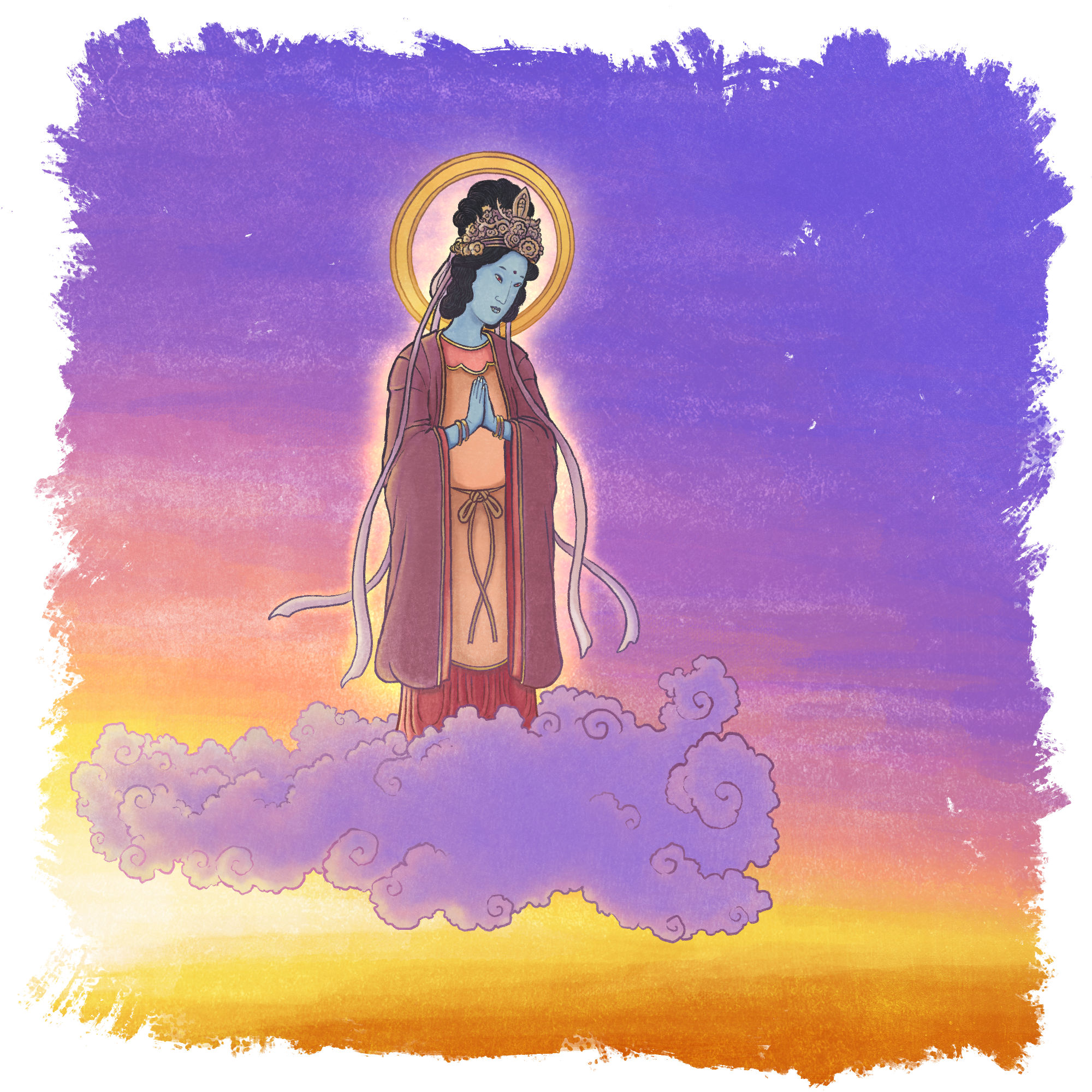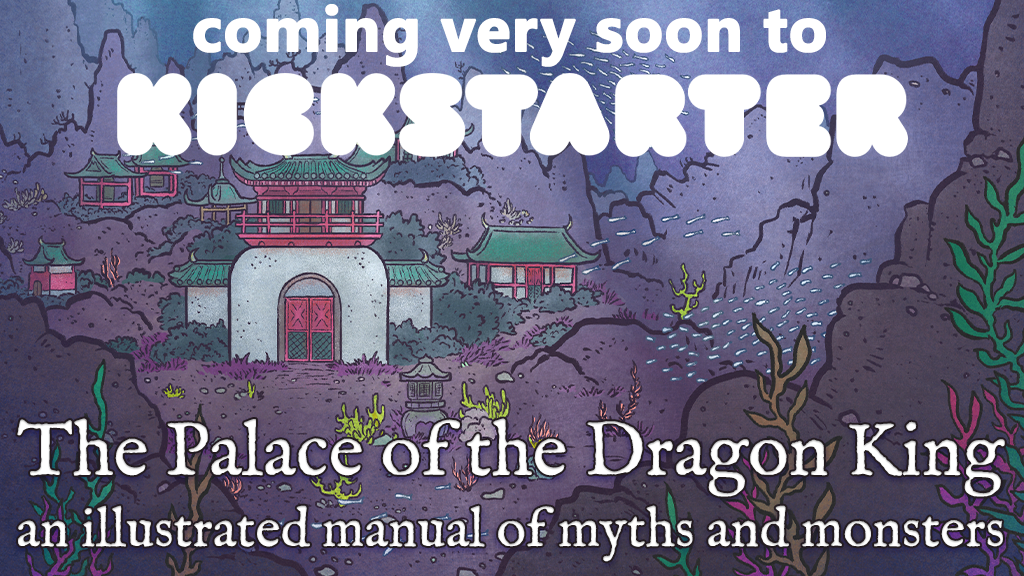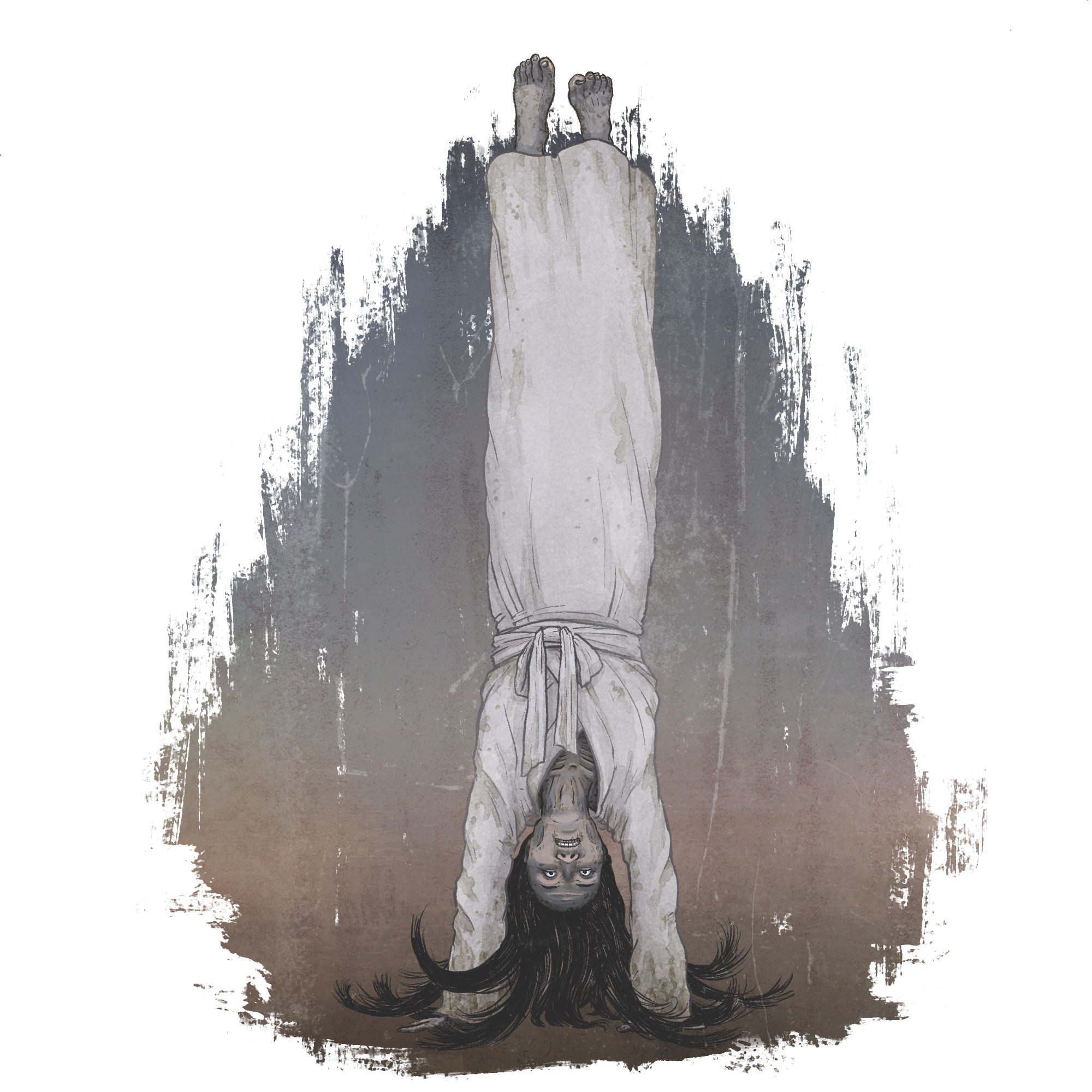🦇 Happy Halloween!!! 🦇
Tonight’s is the final story in this year’s A-Yokai-A-Day. Thank you for reading! I hope you enjoyed these stories and my paintings (and my wife’s, when my broken arm kept me from painting)!
Of course, I will continue to translate and illustrate Japanese folktales throughout the year, but starting tomorrow it will be my patrons who get to read them, instead of me posting them here on my blog. So if you’d like to read my newest stories, learn even more about yokai, and keep up with what I’m working on (including news about when my next Kickstarter will launch…) sign up at my Patreon!
If you want more stories and art, you can also order my books from Amazon, or even get the special collector’s editions from Yokai.com’s web shop. (Books ship from Japan, so order soon if you want them in time for Christmas!)
Tonight’s story features another famous historical figure: Genshin. One of his claims to fame is a book called The Essentials of Rebirth in the Pure Land, in which he describes in graphic detail the Buddhist hells and urges Buddhists to aim to be reborn in the Pure Land, a cosmic realm not unlike heaven, free from pain and suffering, filled with the sweet music of karyōbinga and gumyōchō, where anybody at all can strive to attain buddhahood without the distractions that are found in any of the other realms of existence. After reading this story, it seems no wonder that Genshin is an expert on hell!
There are two yokai named in tonight’s story. One is an oni, which we are all familiar with. The other is a rasetsunyo. Rasetsunyo means “female rasetsu,” and rasetsu is the Japanese word for the Sanskrit rakshasa (the females of which are called rakshasi). Rasetsu are powerful evil spirits which live on earth and feed upon human blood. They can fly, change their shape, and even become invisible. They have vampire-like fangs, and are especially good at seducing humans. But from this story, it appears they are no match for the power of an oni.
The purple cloud at the end of the story is a symbol of the Western Pure Land of Amida Nyōrai. When a devout practicioner is on their death bed, it is said that Amida comes to them on a purple cloud and takes them away to Gokuraku Jōdō. The final scene demonstrates the salvatory powers of Genshin’s prayers.
How Genshin of Mt. Hiei Saw Hell and Came Back
During the reign of Emperor Ichijō, a virtuous teacher named Genshin lived on Mt. Hiei. One time, while traveling down the mountain to the capital, it suddenly started to rain, and a beautiful woman came running up to him from behind and cried in anguish. When Genshin asked her what was the matter, she replied:
“I am a rasetsunyo. I serve an oni who commands me to deceive humans, by taking the form of a woman when approaching a man, or the form of a man when approaching a woman, and bring them to the oni to eat. The oni said that if I don’t catch anyone, it will eat me instead. I haven’t caught anyone today, so I will surely lose my life. I pray that by your dharmic power I might be saved. I humbly beg you. If you think I speak falsely, then follow me and see.”
She went away, and Genshin went after her. They reached a mountain ridge, and night fall. Genshin followed her deeper into the mountains, and they came to a gate. The woman knocked on the gate, and the terrifying voice of an oni was heard. The gate opened, and the oni was furious at her lack of prey. Many oni gathered around her, spitting flames from their mouths. They tore off the woman’s limbs, ripped them into pieces, and devoured them in a dreadful scene.
Genshin took pity upon her. He returned to Mt. Hiei, and he recited scriptures and performed a solemn memorial service for her. That night, the woman came to him in a dream, riding on a purple cloud, with a beatific expression on her face. She turned to Genshin and said:
“Thanks to my teacher’s dharmic power, I was reborn in heaven, and I became a buddha.”
She bowed three times, and then went off into the west.









































